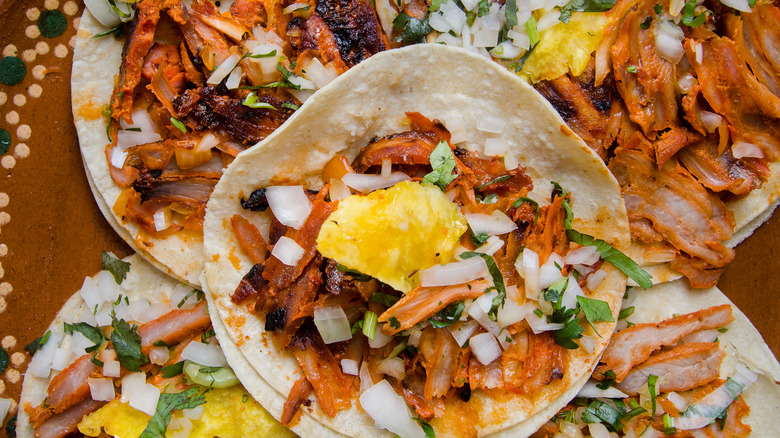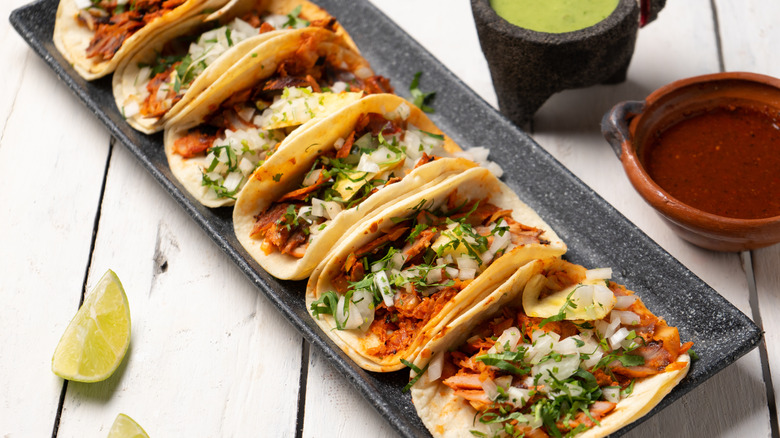What Does 'Al Pastor' Actually Mean?
Out of the many classic Mexican taco configurations, the al pastor stands on its own. Unlike the other taco fillings, which are usually cooked in advance and then griddled on a flat top before landing on your tortilla, you will find a vertical rotisserie at an al pastor vendor, with the chef furiously shaving pieces from the slowly turning stack of pork topped with pineapple. Sweet and savory at the same time, it is a delicious treat.
Although translated from Spanish as "shepherd's style," the story of al pastor is a tale of migration, innovation, and fusion cuisine. Beginning in the Ottoman Empire in the 19th century, al pastor-style meats merge Latin American ingredients with cooking techniques from Asia Minor to create a dish that is unlike anything before it. Whether you get it from your favorite taco stand or make it at home, al pastor is a celebration of global culinary excellence.
A migrant success story
To trace the beginnings of al pastor, we need to go back to the 19th to early 20th century. During that time, Lebanese migrants began to arrive in Mexico, increasing in number as the Ottoman Empire was disintegrating. Settling in central Mexico, near the capital of Mexico City, these new arrivals began to sell a dish that was common in their country of origin. Well known all over the Eastern Mediterranean region as gyro, doner kebab, or shawarma depending on the geographical region, it is made by creating a giant stack of lamb, which is slowly cooked in a vertical rotisserie and served by shaving pieces off the spit. Eaten on a kind of bread similar to pita, they were sold as taco arabes, or "arab tacos" in English.
Fast forward several decades and the children of these Lebanese migrants found themselves opening restaurants. Taking inspiration from their background, these enterprising restaurateurs created a new dish that merged the vertical rotisserie of the shawarma with the meats and flavors of Mexico, swapping out the lamb for the locally popular pork — marinated in a red chili sauce called adobo. Shaved like shawarma and served on tortillas, it became part of the Mexican food canon.
Make al pastor at home
While you might not have a vertical spit at home to create al pastor pork as it is made at taco shops, you can still enjoy this sweet and savory treat at home once you know a couple of tips. First, choose the right kind of meat by using thinly sliced pork butt, which contains enough fat to prevent the meat from becoming dry. You will need to create a marinade — also known as adobo — to flavor the meat, which contains a wide array of spices including cumin, rehydrated chilis, achiote paste, and pineapple juice — which helps break down the connective tissue of the butt.
Cook the pork by slowly roasting it in the oven, or you can make grilled al pastor tacos outdoors. Once it's cooked, you can serve them on warm corn tortillas. Garnish with roasted or grilled pineapple, raw white onions, and cilantro, just like the way these tacos are served in their country of origin. Pair these tacos with a spicy margarita or tangy michelada for a refreshing and filling meal.



